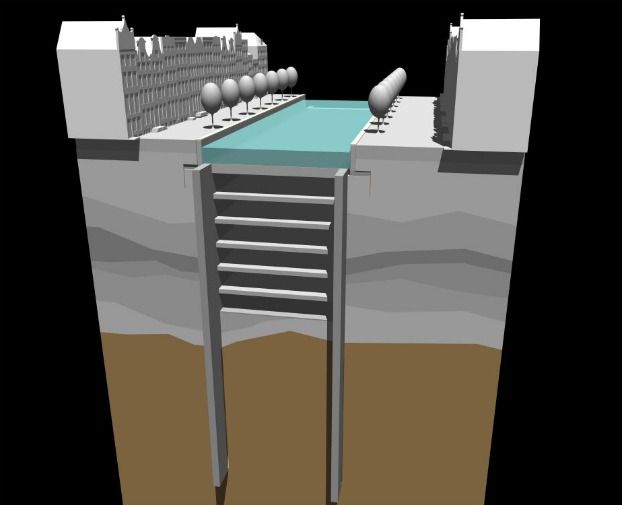Underwater City A Life Saver or Titanic Failure?

When the idea emerged in 2008, environmentalists balked. So did reasonable people everywhere. Dutch architect Moshé Zwarts suggested draining Amsterdam's canals, building an enormous parking and entertainment complex under the city, and then refilling the canals. Presto! More space!
Granted, Amsterdam did -- and does -- have little space to spare, but the project would have cost an estimated $14.4 billion. Not to mention the tiny problem of exhaust buildup. And logistics. Mercifully the idea was backburnered. Zwarts' architectural firm returned to making futuristic designs for structures like bridges, bus stations, and viaducts.
PHOTOS: Flood Waters Along the Mississippi River
Now Green Prophet writer Maurice Picow has dug up the old plan, calling it at the very least far more feasible than a domed Atlantis-type city of science fiction fame. Picow compares Zwarts' original idea to the man-made floating islands concept for areas facing the prospect of rising waters. After mulling it over, he ultimately decides that the islands "may hold water better."
As widely criticized as Zwarts' vision was at the time, there's something about it that still captures the imagination. Picow's post prompted Gizmodo's Nick Broughall to wonder what had happened to Amsterdam's giant underground city.
'Earthscraper' Takes Architecture Underground
"It wasn’t a universally loved idea, obviously, but had it been approved, [it] could have created an amazing tourist destination or a superb underground lair for an evil mastermind," he wrote.
Sign up for the Live Science daily newsletter now
Get the world’s most fascinating discoveries delivered straight to your inbox.
It might be time to think of some radical architectural ideas for Amsterdam again, though. Storms across the area recently caused massive flooding. And there hasn't been an Aquaman sighting yet.











